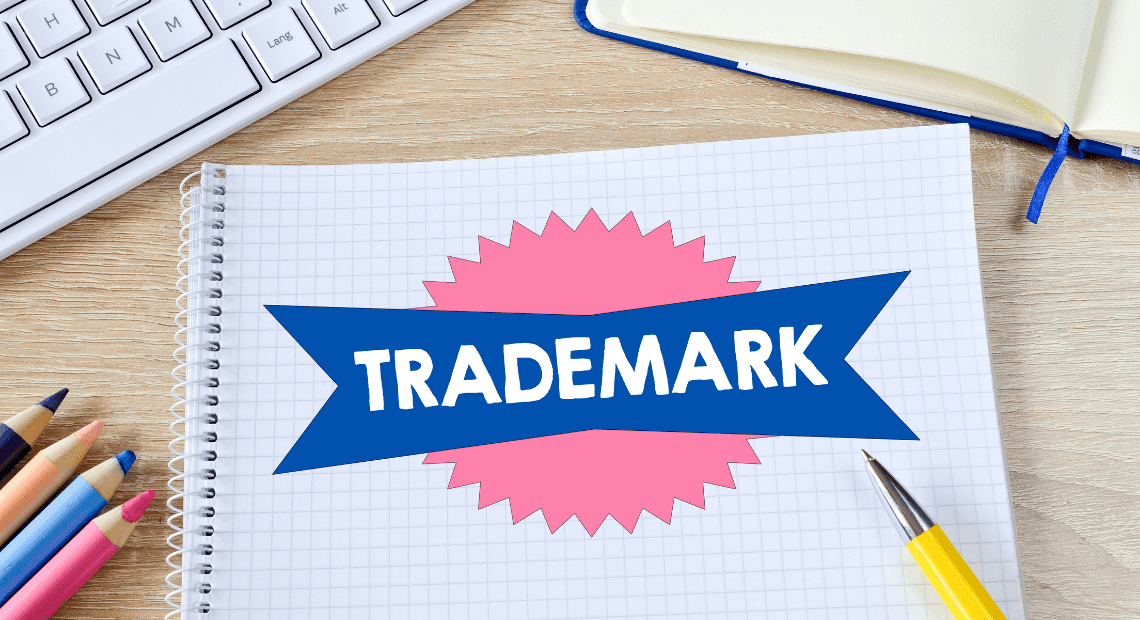Trademarks are essential for businesses to protect their brand names, logos, and slogans from being used by others. Registering a trademark in Canada can seem like a daunting task, but it doesn’t have to be. In this guide, we’ll walk you through everything you need to know about registering a trademark in Canada for the year 2023.
Contents
- 1 Overview
- 2 Understanding Trademarks in Canada
- 3 Trademark Eligibility in Canada
- 4 Trademark Search
- 5 Trademark Application
- 6 Examination of Trademark Application
- 7 Publication of Trademark Application
- 8 Opposition of Trademark Application
- 9 Registration of Trademark
- 10 Maintaining Trademark Registration
- 11 Enforcement of Trademark Rights
- 12 International Trademark Registration
- 13 Conclusion
- 14 FAQs
Overview
Registering a trademark in Canada is important for protecting your brand and preventing others from using it. Trademarks are registered with the Canadian Intellectual Property Office (CIPO) and can take anywhere from six to eighteen months to be approved. In this guide, we’ll take you through the process step-by-step and answer some of the most common questions about registering a trademark in Canada.
Understanding Trademarks in Canada
A trademark is a sign, symbol, or logo that distinguishes your goods or services from others in the marketplace. Trademarks can include words, designs, logos, sounds, and even smells. Registering a trademark in Canada gives you exclusive rights to use that trademark in connection with your goods or services in Canada.
In other words, it’s what sets your brand, product, or business apart – and you want to protect it.
Registering your trademark can help protect your innovation, your brand, and your creation or product.
Over time, your trademark will come to represent not only the actual goods or services you provide but also your company’s reputation. Customers will recognize it as a symbol of your brand and everything it stands for.
Trademark Eligibility in Canada
To be eligible for trademark registration in Canada, your trademark must meet certain requirements. First, it must be distinctive, meaning it must be able to distinguish your goods or services from others in the marketplace. Second, it must not be confusingly similar to any existing trademarks in Canada. Finally, it must not be prohibited by law, such as being deceptive, scandalous, or immoral.
Trademark Search
Before applying for a trademark, it’s important to conduct a trademark search to ensure that your proposed trademark is not already in use by someone else. This search can be done on the CIPO website or through a trademark agent. It’s important to conduct a comprehensive search to avoid potential conflicts down the road.
Trademark Application
Once you’ve conducted a trademark search and determined that your proposed trademark is available, you can file a trademark application with the CIPO. The application must include a description of the goods or services associated with the trademark, as well as a list of any other countries where the trademark is being used or registered.
Review the Application Requirements and Fee
A complete trademark application will require several components, all of which you’ll need to gather and prepare before you submit your application. These are the items you’ll need:
- Your name and contact information
- A representation or description of the trademark
- A statement of the goods and services related to your trademark
- A statement of goods and services grouped according to the Nice Classification
- Your application fee
- Any other requirements listed on the CIPO website
Every distinct trademark that you want to register will require a separate application.
For instance, you might want to register a trademark for the name of your company as well as for its logo or any other related design. Each of these elements would require an individual application; they cannot be combined into one.
To return to our Tim Hortons example, that company would have had to file separate applications to trademark its name in words, to trademark each design of its name or logo that it has registered, and to trademark any other designs or names (such as the trademarks for its Iced Capp or its Timbits).
The fee you’ll pay will depend on how you submit your application and the number of classes of goods or services your trademark relates to.
If you apply online, you’ll pay less than you would if you submit through other means (such as by mail). You can read the full list of trademark application fees here.
Prepare the Trademark Application
The most involved aspects of preparing your trademark application are usually putting together the representation or description of the trademark and compiling a list of related goods and services.
Preparing the Representation or Description
Your representation or description could take many forms depending on the type of trademark you’re aiming to register.
For visual trademarks, you’ll have to submit a representation like a drawing, picture, or rendering that is smaller than 8 cm by 8 cm.
If your trademark claims colours as one of its features, the representation must be submitted in colour. You’ll also need a description of the colours and where they appear.
Some trademarks may also include sound or moving images, in which case you’ll need an electronic representation and description of the trademark.
More information about nontraditional trademarks and trademark components (holograms, scents, tastes, etc.) can be found here.
The range of features you can claim as part of your trademark application is broad, so the CIPO’s guide to nontraditional trademarks can be a valuable resource to help ensure you’re protecting as much of your intellectual property as possible.
Preparing the Statement of Relevant Goods and Services
The other important part of your application that you’ll need to prepare is the statement of relevant goods and services.
These can be quite specific, so you’ll want to use the CIPO’s Goods and Services Manual to pick the categories that apply to your trademark. The manual has a search function to help you do this.
For example, one of the Tim Hortons logo trademarks lists the following descriptions for goods and services related to the trademark:
Goods: Donuts, donut holes, bagels, muffins, cakes, biscuits, cookies, pies, coffee beans and ground coffee, sandwiches, soups, chili, soft drinks, juice, and prepared non-alcoholic beverages namely, coffee, specialty coffees including cappuccino, hot chocolate, and tea.
Services: Sit-down and take-out restaurant services.
Within the Goods and Services Manual, you can search by keyword, by Nice Class, or alphabetically to find the right classifications for your trademark.
Pay the Fees and File Your Application
When you’ve gathered the components of your application and are ready to submit it, you can file your application and pay the fee online, or you can send your application and fee by mail. Applications submitted by mail should be sent to the following address:
Office of the Registrar of Trademarks
Canadian Intellectual Property Office
Innovation, Science, and Economic Development Canada
Place du Portage I
50 Victoria Street, Room C114
Gatineau QC K1A 0C9
Once your application has been received, whether by mail or online, staff will review it to ensure that it includes all the requirements. If your application is missing anything, the Office of the Registrar of Trademarks will contact you to ask for additional information.
When that process is complete, the Registrar will send you confirmation that your application has been received and will give you a filing date. Make sure to keep any communication you receive from the Registrar.
The filing date is when your application met all the filing requirements. It’s an important piece of information because it can be crucial in deciding who gets to register a trademark in the case of two similar trademarks that are pending simultaneously.
Continue Correspondence with the CIPO
After you apply to register your trademark and receive a filing date, an examination process will begin. The examination process will ensure that your trademark does not overlap with other trademarks, that it meets legal requirements, and that there is no opposition to your trademark.
Depending on the outcome of this examination, you may need to take additional steps to ensure that your trademark is registered.
File an Amended Application
Based on the examination findings, you may need to file an amended application. This amendment will respond to any issues that came up during the application process and will revise your trademark idea, often with slight changes.
Send General Correspondence
While registering your trademark in Canada, you may need to correspond with the Office of the Registrar of Trademarks. Be sure to respond to them because if you don’t respond to an examiner’s report, the Registrar may believe your application has been abandoned.
You can correspond with the Registrar either online or by mail. Online correspondence will use the same system that you used for filing online, accessible here. Correspondence by mail will use the physical address listed above.
Some common correspondence topics might include cancelling or withdrawing your trademark application, changing a name or address, or appointing a trademark agent.
Ensuring that you stay on top of this communication can help expedite getting your trademark registered.
Examination of Trademark Application
After you’ve filed your trademark application, it will be examined by the CIPO to ensure that it meets all of the eligibility requirements. If there are any issues with the application, you will be notified and given a chance to respond. If the application is approved, it will move on to the publication phase.
Publication of Trademark Application
Once the trademark application has been approved, it will be published in the Trademarks Journal. This gives others the opportunity to oppose the trademark application if they believe it conflicts with their own trademark rights.
Receive Your Certificate of Registration
Before your trademark is registered, it will be published in the Trademarks Journal, which can be found on the CIPO website each Wednesday.
This journal shares every approved trademark application in Canada so that others may object to any trademark before officially registering it.
Any person can oppose your trademark, but they must do so (or request an extended period during which to oppose it) within two months of the advertisement in the Trademarks Journal. If your trademark does get opposed, you can engage in opposition proceedings, which are similar to court proceedings.
As long as your trademark is not opposed (or opposition has been decided in your favour), the Registrar will register your application.
Once they’ve done that, they’ll send you a certificate of registration, and they’ll enter the trademark in Canada’s Register of Trademarks. At that point, the process is complete.
Opposition of Trademark Application
If someone opposes your trademark application during the opposition period, you will be given a chance to respond. If the opposition is successful, your trademark application may be refused. If the opposition is unsuccessful, your trademark application will proceed to registration.
Registration of Trademark
If your trademark application is successful and no opposition is filed, your trademark will be registered with the CIPO. You will receive a registration certificate, which gives you exclusive rights to use the trademark in connection with the goods or services listed in the registration. Your trademark registration will be valid for ten years from the date of registration and can be renewed indefinitely as long as it continues to be used in Canada.
Maintaining Trademark Registration
Maintaining your trademark registration is essential to ensure that your trademark remains valid. You must use your trademark in connection with the goods or services listed in the registration, and you must file a declaration of use with the CIPO between the fifth and sixth anniversary of your trademark registration. You must also renew your trademark registration every ten years.
Enforcement of Trademark Rights
If someone infringes on your trademark rights, you can take legal action to enforce your rights. This may include sending a cease and desist letter, filing a lawsuit, or pursuing other legal remedies. It’s important to act quickly if you believe someone is infringing on your trademark rights.
International Trademark Registration
If you plan to use your trademark outside of Canada, you may want to consider registering your trademark internationally. This can be done through the Madrid System, which allows you to register your trademark in multiple countries with a single application.
Conclusion
Registering a trademark in Canada is an important step for protecting your brand and ensuring that others cannot use it without your permission. By following the steps outlined in this guide, you can successfully register your trademark and maintain its validity over time. Remember to conduct a comprehensive trademark search, file your trademark application, and maintain your registration to ensure that your trademark remains protected.
FAQs
- How long does it take to register a trademark in Canada?
The registration process can take anywhere from six to eighteen months, depending on the complexity of the application and whether any issues arise.
- How much does it cost to register a trademark in Canada?
The cost of registering a trademark in Canada varies depending on the type of application and the number of goods or services associated with the trademark. The fees range from $330 to $500 CAD per class.
- Can I file a trademark application myself, or do I need to use a trademark agent?
You can file a trademark application yourself, but it’s often recommended to use a trademark agent to ensure that your application is properly prepared and submitted.
- What happens if someone opposes my trademark application?
If someone opposes your trademark application during the opposition period, you will be given a chance to respond. If the opposition is successful, your trademark application may be refused.
- How long does a trademark registration last in Canada?
A trademark registration in Canada is valid for ten years from the date of registration and can be renewed indefinitely as long as it continues to be used in Canada.




